Available now from $15: Raspberry Pi Camera Module 3 Sensor Assemblies
Since its launch two-and-a-half years ago, our 12-megapixel autofocus Raspberry Pi Camera Module 3 has found a home in countless enthusiast projects, and in a wide range of industrial and embedded applications.
But we’ve found that some of our embedded customers want to integrate our camera technology into smaller form factors than our 25 × 24mm module footprint can support. To help these customers, we’re pleased to announce that the Raspberry Pi Camera Module 3 Sensor Assemblies are now available to purchase as standalone products, priced from just $15.

Raspberry Pi Camera Module 3 Sensor Assemblies offer the same IMX708 4608×2592 (11.9 megapixel) sensor, with 1.40μm pixels, and the same Phase Detection Autofocus (PDAF) capability as Camera Module 3. We are providing reference schematics and a bill of materials to assist you in integrating the required support components onto your own PCB.
Like Camera Module 3, Camera Module 3 Sensor Assemblies are available in both visible-light and infrared-sensitive (NoIR) variants, and with either a standard (75° diagonal) or a wide (120° diagonal) field of view; and like Camera Module 3, there is a $10 price difference between the standard FOV variants and the wide FOV variants.
| Camera Module 3 Sensor Assembly | $15 |
| Camera Module 3 Sensor Assembly NoIR | $15 |
| Camera Module 3 Sensor Assembly Wide | $25 |
| Camera Module 3 Sensor Assembly Wide NoIR | $25 |

Cameras are the original Raspberry Pi accessory, dating back to the launch of Camera Module 1 in May 2013. They are already found in applications as diverse as workplace safety, wildlife conservation, glacier stability monitoring, manufacturing quality control and museum-based education. We look forward to seeing Raspberry Pi Camera Module 3 Sensor Assemblies take our imaging technology to new and exciting places!
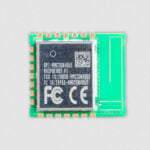
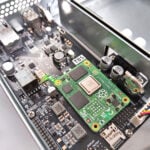
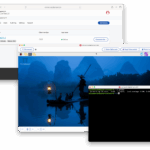
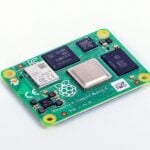
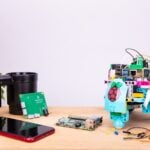

19 comments
Jump to the comment form
solar3000
What the! Another surprise. Nice.
CreatedWithATrackPoint
I was wondering, what would these normally be used for? Is it for integrating into PCBs or something?
Raspberry Pi Staff Eben Upton
Yes – this allows you to build the support circuitry that normally lives on the Camera Module 3 (mostly power supplies) onto your own circuit board, and just plug in the sensor assembly for a more compact implementation. Mostly relevant to OEMs (original equipment manufacturers) who want to build products on top of Raspberry Pi.
Shawn
There are still only two lanes correct? Looks like the 4 NC pins would be the other two lanes.
Any plans for a 4 lane camera? The extra bandwidth would be nice especially if we’re working with sensor assemblies. A user is building a custom board for these anyway why not at least provide access to the pins?
There was a project from 5 years ago that used a FPGA and soldered wires to access those pins and get 4 lanes out of a PI camera. Facilitating that without the need to solder extra wires would make this a must have for me.
Nick Hollinghurst
It does have 4 lanes, but there is no driver support for that at present.
Note that the HDR mode is limited to 30fps. It should be possible to speed up the other modes.
CreatedWithATrackPoint
Thanks, Eben.
Helen McCall
I am thinking these could be made into teddy bear eyes so I can make a teddy bear to sit in my bedroom window as a secret security device.
Ton van Overbeek
How do you connect it to the Pi? I cannot see any connectors in the pictures.
Raspberry Pi Staff Eben Upton
There is a tiny plug on the back of the black flexi, that mates with a corresponding socket on your carrier board.
Steven Blackburn
What is that plug (I couldn’t find mention of it) and is it something we can get socket for on a custom PCB?
Andrew S
This is detailed in the bill of materials (BOM) linked to from the article.
Laurent
Nice. Can’t wait to see third party product using those modules!
mark
great to see this as an available option.
for those of us whom don’t have experience in making our own circuit / carrier boards, can you please consider offering a carrier board that allows for two of your camera sensor assemblies to be placed side by side? (as close as possible would be ideal)
this would be helpful to be able to experiment with two different kinds of cameras on a single compact board, ideally with a single csi flex cable going to the raspberry pi (though two cables would be okay).
right now one could rig up something with two camera modules side by side, but they may not be perfectly aligned 100% on a flat plane like they would be when installed properly on a single board.. and the most compact form factor would be ideal for some applications (both in terms of physical space and having the lenses as close to each other as possible). hopefully in the future two cameras can work on a smaller pi than the 5, like a new model the size of the pi 3 a+ or in the zero form factor.
Rajiv
Just the thing we were looking for
Astro
Why this product is not available in India
TETSUYA NOMURA(sohonomura2020)
We supply the 4-lane compatible board and extension FPC to minimize the camera head for V2 module and V3 module.
https://forums.raspberrypi.com/viewtopic.php?t=389942&sid=c8e207fd447c5280f35a17ef198f1380
Sanjoy Chakraborty
Very interesting news. We have been informed by various sources that the Sony IMX708 sensor has been marked as discontinued and is not available in the usual supply chain. Please let us know how long supply of these ‘new’ camera modules are guaranteed for?
Raspberry Pi Staff Helen Lynn
These will remain in production until at least January 2030. You can check this information for all Raspberry Pi products on their product pages; in general we put a lot of effort into guaranteeing long availability for all our hardware.
Mizzi Mo
Is there a possibility to get a USB converter, for the reference design